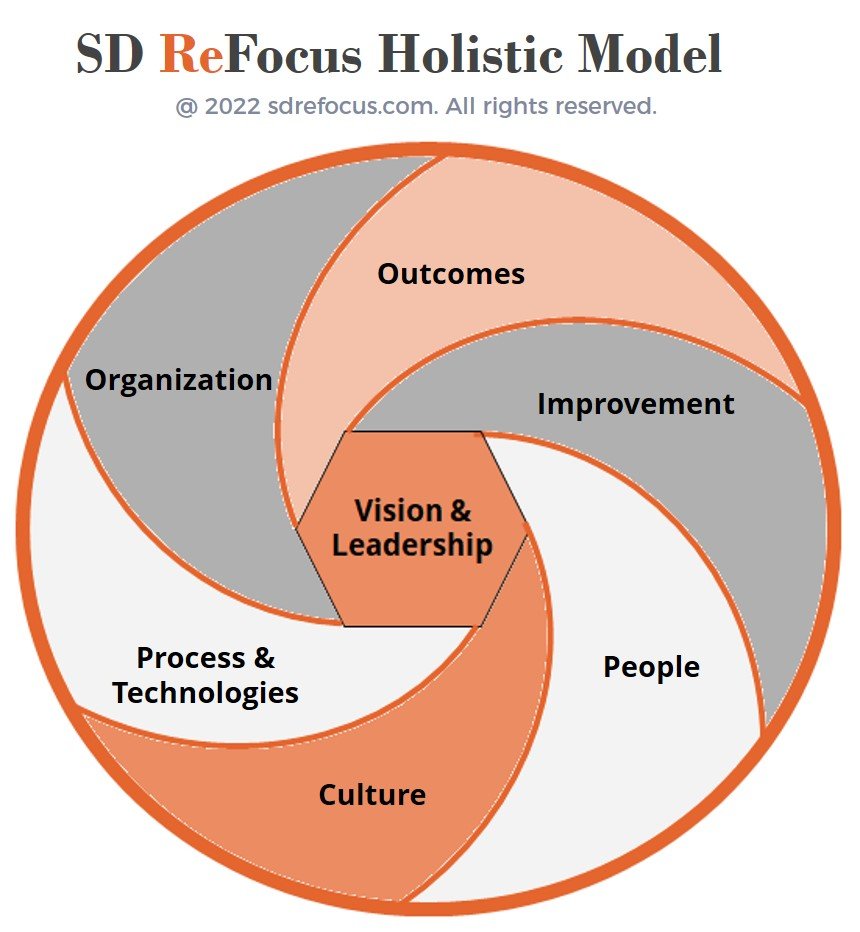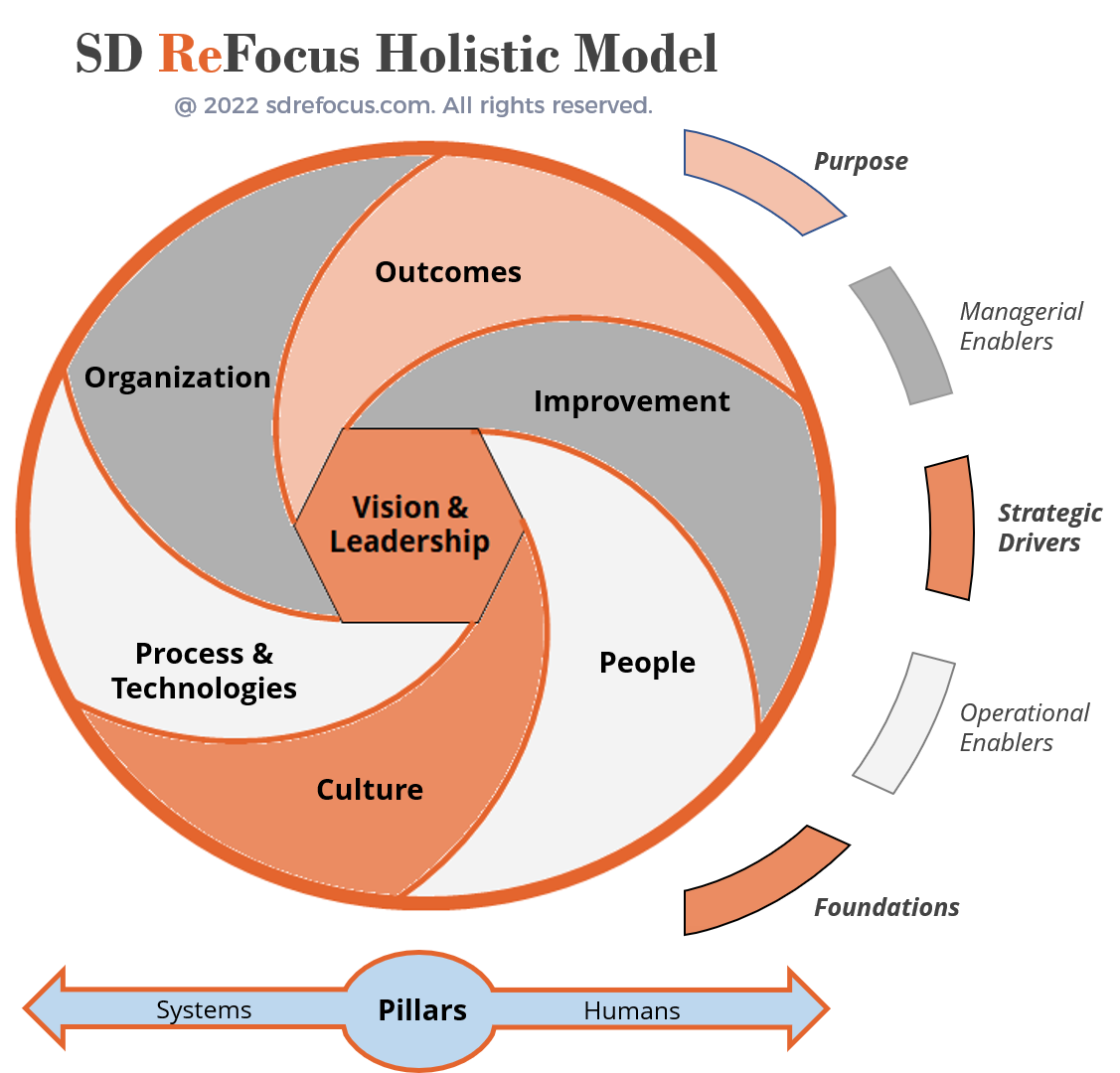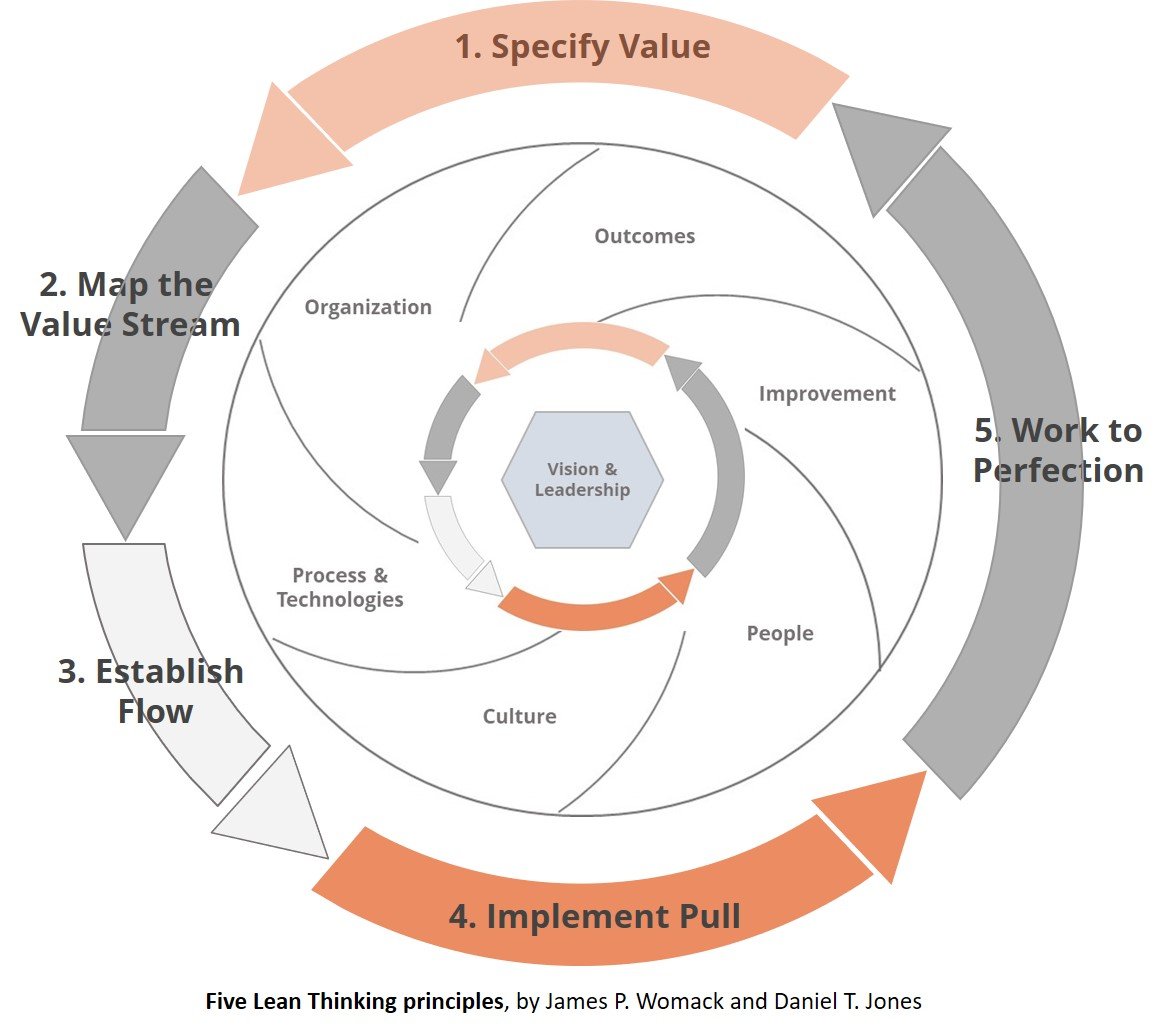Patrice Corbard - SD ReFocus Founder, March 2022

Why propose a new model? Isn't it reinventing the wheel?
As soon as you see an article presenting a new model, these questions legitimately arise. Before designing this 7-dimensional model, I studied those proposed by frameworks and consulting firms. There are many of them, developed from different perspectives (Lean, Digital, Engineering, Leadership, Management...), each with its own vocabulary.
Having failed to find a model that matched my own experiences, I decided to design a holistic model covering the different facets of a DevOps transformation initiative.
A Holistic Model of the Facets of a DevOps Transformation
The model covers both Operational Enablers (people, processes, and technologies) and Managerial Enablers (organization and improvement).
It clearly places the key role of Leadership at the heart of driving such an initiative, with Cultural aspects as the foundation of all dimensions, and Outcomes as the purpose for aligning the whole approach.
The model also results from the choice of visual representations:
- A circular shape symbolizes a 360° holistic vision of dimensions;
- A photographic metaphor to focus on important dimensions according to context.

Lean Principles to Create a Continuous Improvement Dynamic
Although the dimensions provide an overview of an initiative, the key to success lies in the momentum of continuous improvement!

To develop and implement its vision, the leadership can draw on the cycle of the five principles of lean thinking:
- Specify the customer value and therefore the outcomes to be achieved;
- Identify and map value streams involving different organizational functions;
- Establish a smooth flow of work by improving processes and technologies and developing team skills;
- Pull the flow from real customer needs and feedback;
- Progress step by step towards perfection, so that the number of steps and the time required to serve customers continually improve.
A Model for Refocusing Software Delivery on What Really Matters
Even if they bring real benefits, transformation initiatives (agile, DevOps/DevSecOps, SRE,...) don't always succeed in delivering or demonstrating the expected customer value.
« We believe that members of software value streams can apply lean principles to refocus on what really matters in their specific situation. »
Two key features and reasons for adopting a lean approach:
- Focus on customer satisfaction to align all stakeholders on a common vision and corporate objectives;
- A systems-thinking view combining engineering and human dimensions, rather than an approach focused on technology implementation and local optimization within each specialized group.
Depending on its specific situation and needs, an organization may need to move from traditional to modern software delivery practices. The summary table below shows the macro-trends observed in each dimension:

Adopt a Scientific Approach to Progress Step by Step
It would be an illusion to think that a single dimension can solve everything, or that it's enough to identify the first or most important one.
« All dimensions are interconnected, forming a complex socio-technical system. »
The way to reduce this complexity is to move forward in small steps, hypothesizing, dealing with one problem at a time, measuring the results, and comparing them with the initial hypothesis - in other words, taking a scientific approach to problem-solving.
Conclusions
This model was developed because we couldn't find any description of the dimensions encountered in DevOps initiatives. If you know of other equivalent models, please share them in the comments or contact me (pcorbard@sdrefocus.com).
This modeling exercise also serves to clarify the approach taken to assist SD ReFocus customers with their initiatives. This is only the first version, which will evolve according to usage, feedback, and the evolution of our disciplines.
Finally, this model seems generic enough to be applied to other transformation initiatives.